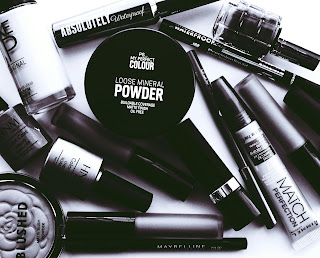Advantages of Eyeliner (Kajal):-
1) Cosmetic Enhancement: Kajal draws attention to the eyes, giving them a more pronounced, startling, and bigger appearance. This is why it's a widely used beauty product in many cultures.
2) Tradition and Symbolism: Wearing kajal was thought to be auspicious in many ancient societies. For instance, kajal was used to protect newborns' eyes from the "evil eye" (nazar) in India. It had religious and cultural importance as well. Cooling and medicinal properties: In the past, kajal was thought to protect the eyes from diseases, dust, and the sun's glare while also cooling them down. It was commonly created with natural, calming substances like soot, ghee, and camphor.
3) Cooling and medicinal properties: In the past, kajal was thought to protect the eyes from diseases, dust, and the sun's glare while also cooling them down. It was commonly created with natural, calming substances like soot, ghee, and camphor.
4) Cultural Identity: Kajal is associated with identity and tradition in many communities. For example, Cleopatra and other ancient Egyptians utilized it not just for aesthetic purposes but also to lessen sun glare and avoid eye diseases.
5) Spiritual Protection: In the past, kajal was thought to be important for warding off bad spirits and the evil eye, particularly in young people.
6) Usage in Medicines: Some people thought it offered protection against conditions of the eyes, such as irritation or conjunctivitis.
7) Cosmetic Appeal: It enhanced one's appearance by giving the eyes of both men and women in many cultures—from South Asia to the Middle East—more depth and appeal.
Relevance in the Present:-
1) Fashion and Aesthetics: Due to its ability to enhance beauty, kajal is still extensively used. It comes in a variety of contemporary forms, including liquid liners, gels, and pencils.
2) Cultural and Religious rites: It is still widely used in daily routines, traditional festivities, and ceremonial rites.
Why We Shouldn't Wear Kajal Today:
1) Lead Pollution: Lead poisoning can result from the high quantities of lead found in many traditional kajal products, particularly those that are unregulated. Lead can build up in the body and harm the kidneys, neurological system, and brain, especially in young children. The risk of infection arises from the inappropriate application or sharing of kajal, which can introduce bacteria into the eyes and cause infections. Low-quality or homemade kajal may include impurities.
2) Regulation Concerns: Due to the possibility of lead poisoning, kajal is regarded as an authorized product in a few nations, notably the United States. It's typically imported without the necessary safety inspections or marketed illegally.
3) Irritation and Allergies: Preservatives, perfumes, or artificial dyes used in some modern kajal formulations may irritate sensitive eyes or cause allergic reactions.
4) Concerns Regarding Eye Health: Using kajal consistently and frequently, especially when it's not made correctly, might occasionally clog the tear ducts or have a detrimental effect on eye health.
Conclusion:-
While kajal has a long and rich history, blending cosmetic, cultural, and medicinal purposes, the modern concerns around contamination, particularly with lead, and other potential health risks mean that consumers should be cautious. Opting for branded, regulated products, or alternatives like non-toxic eyeliners, is advisable. Awareness of these risks helps users make safer, more informed choices.


No comments:
Post a Comment